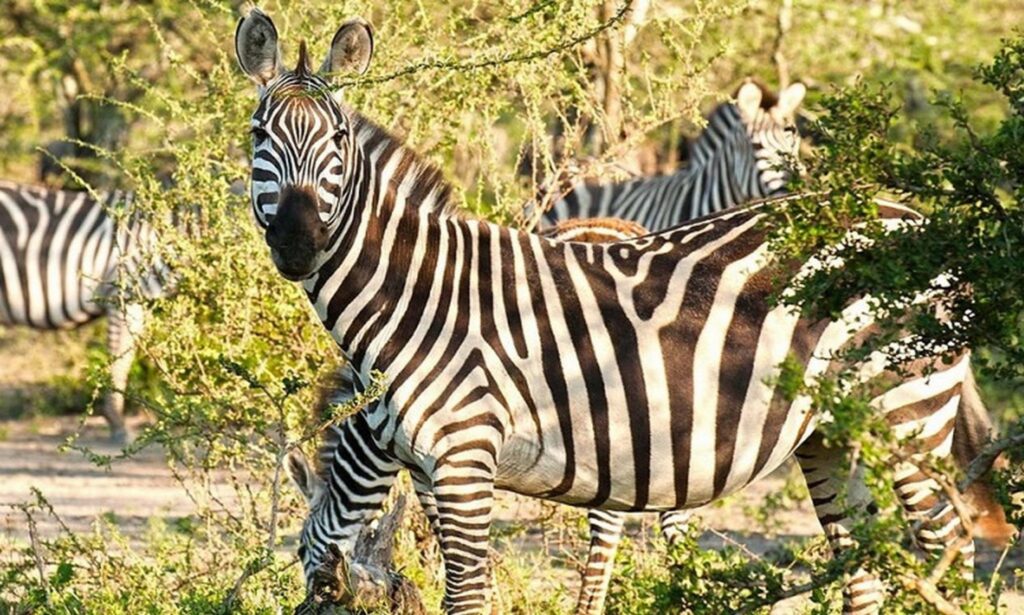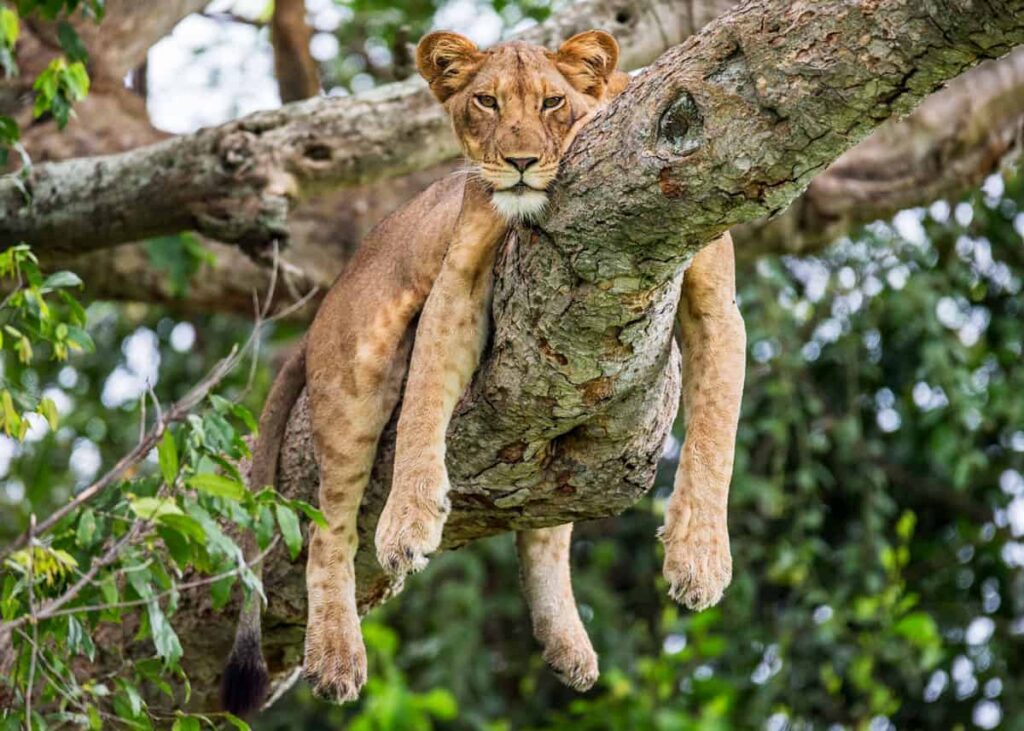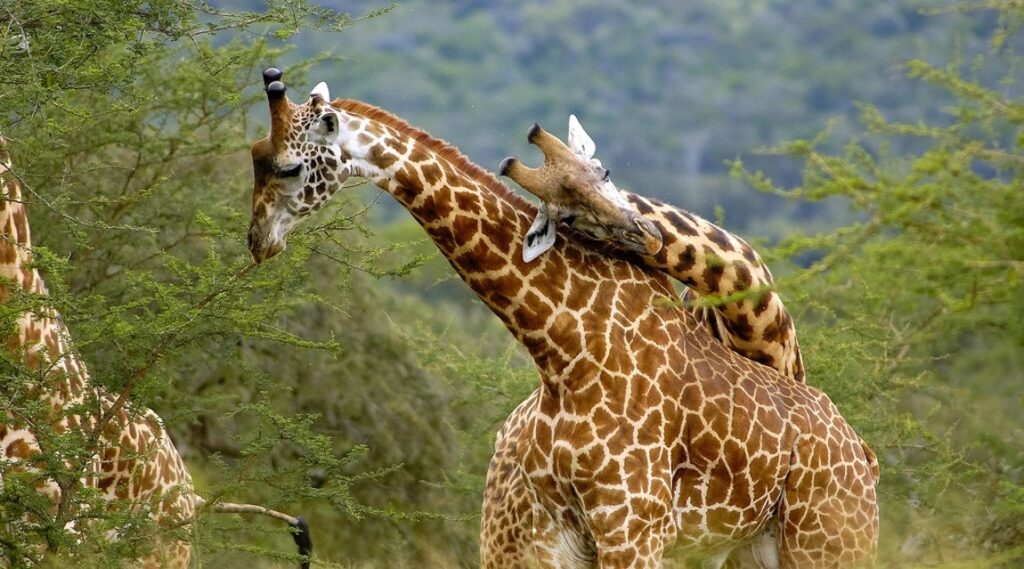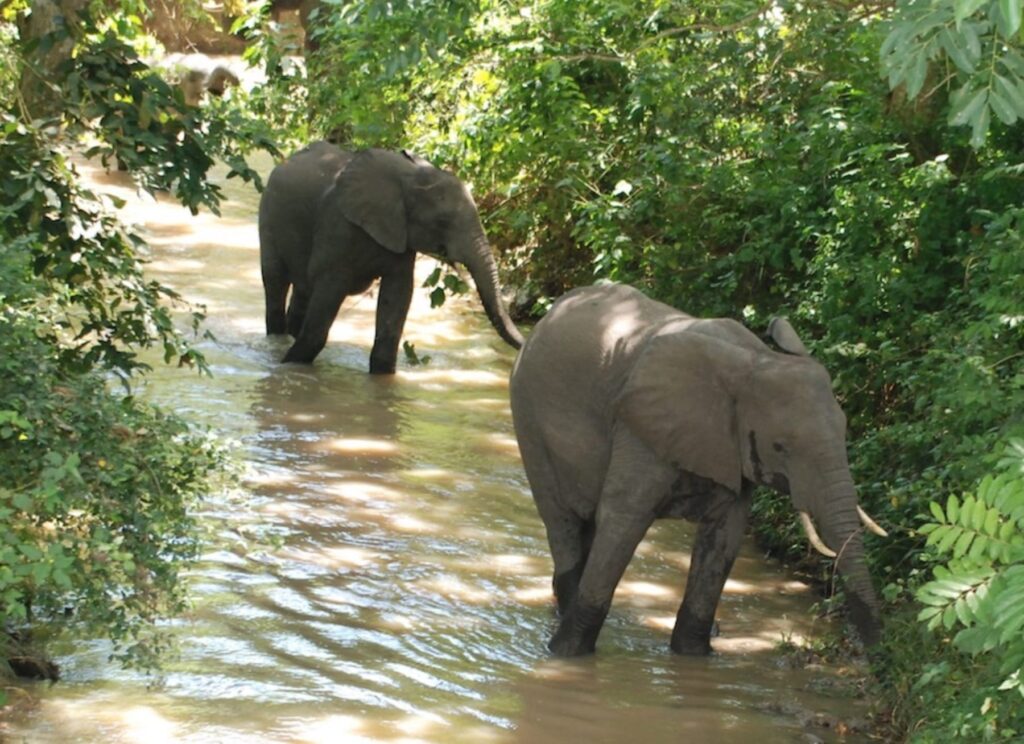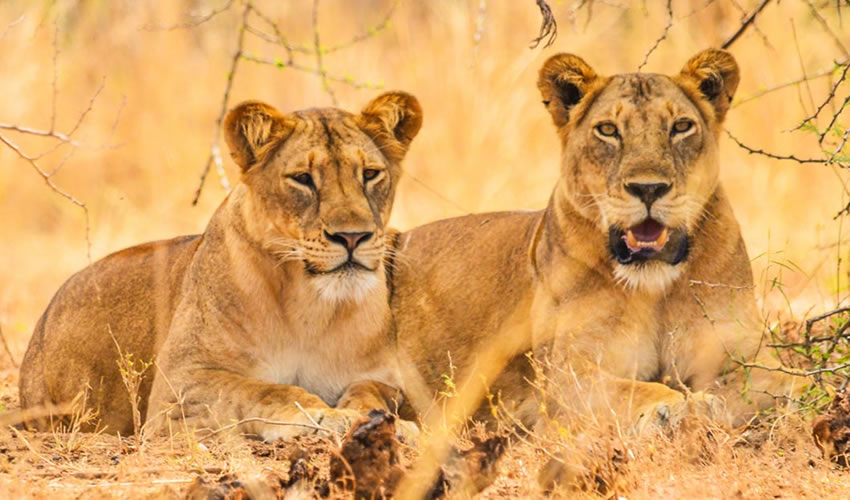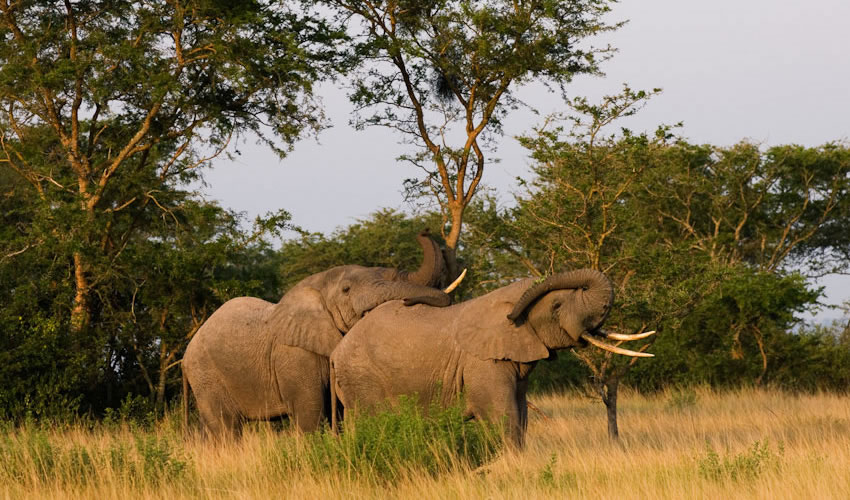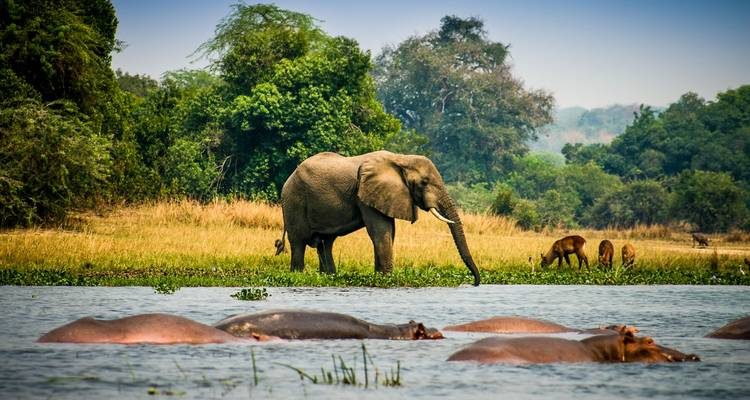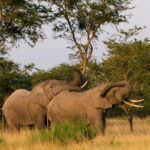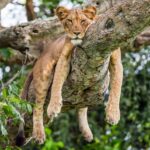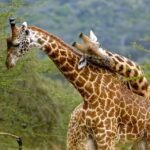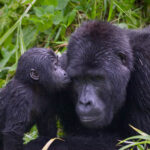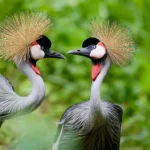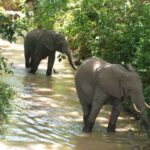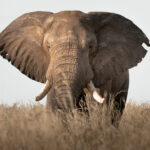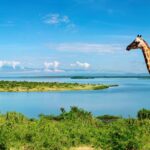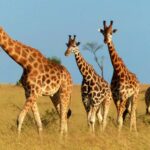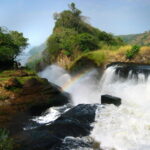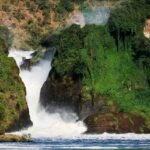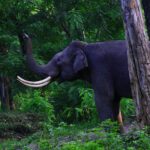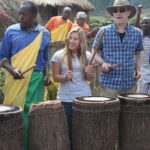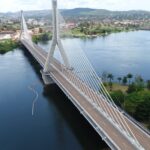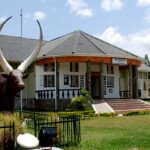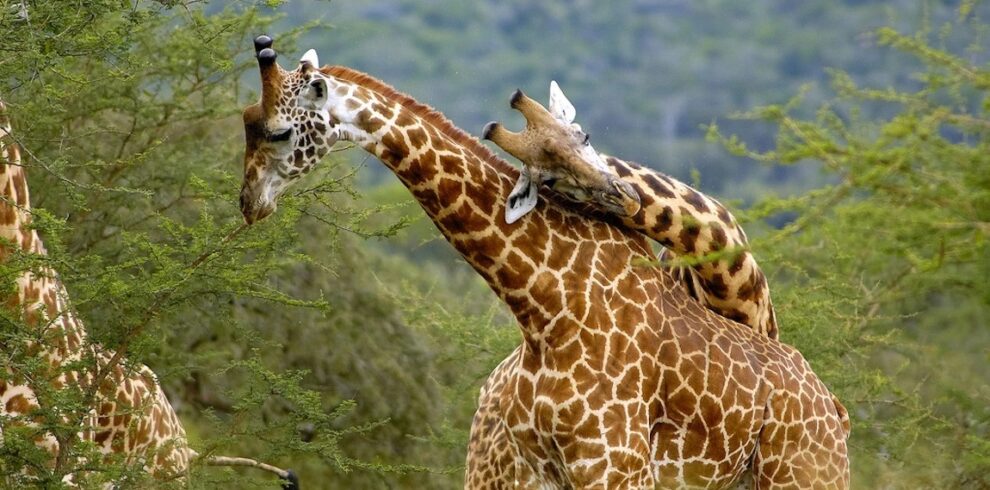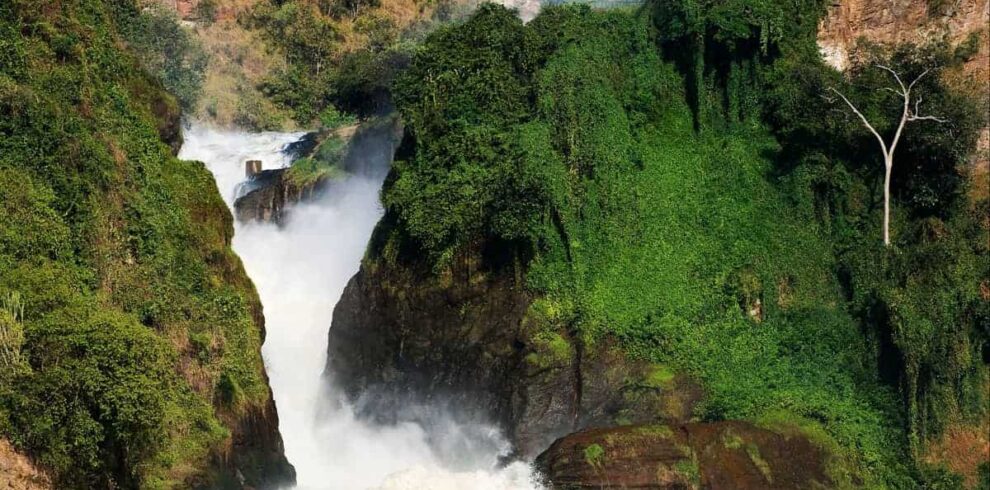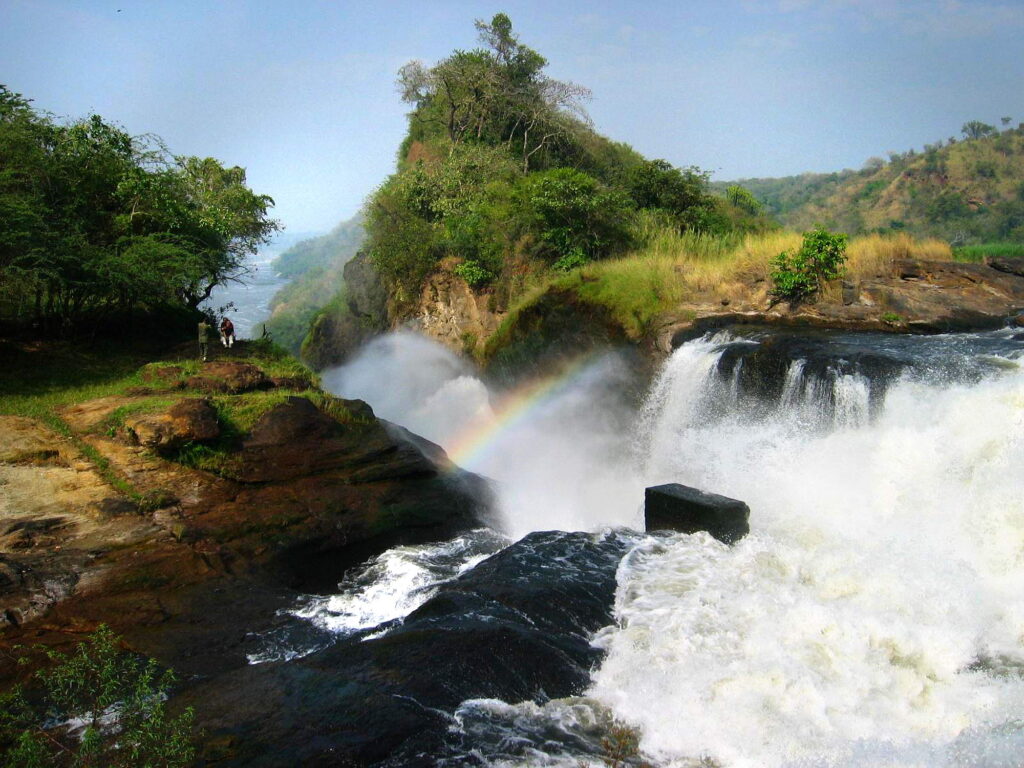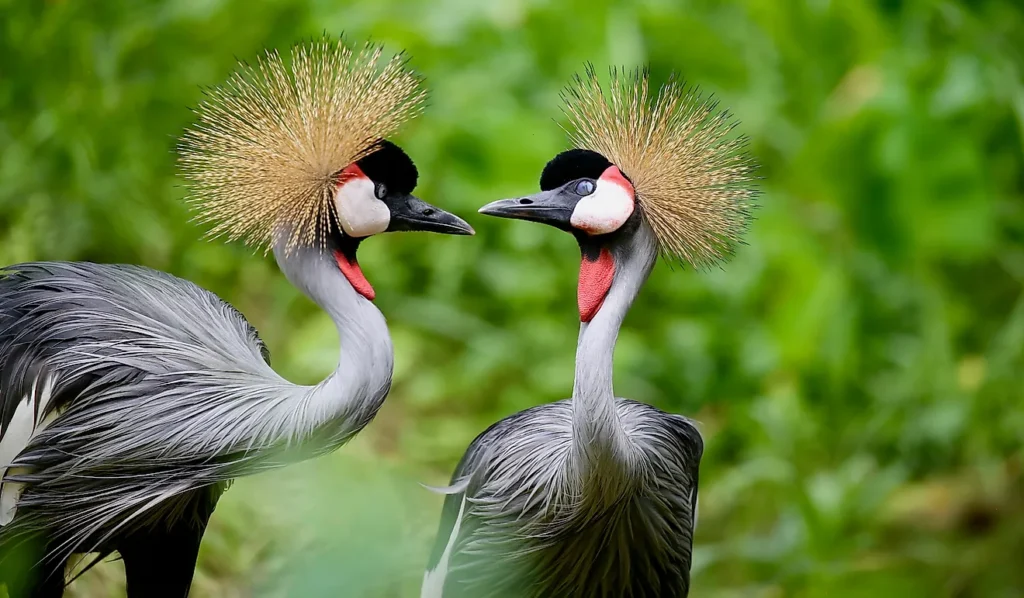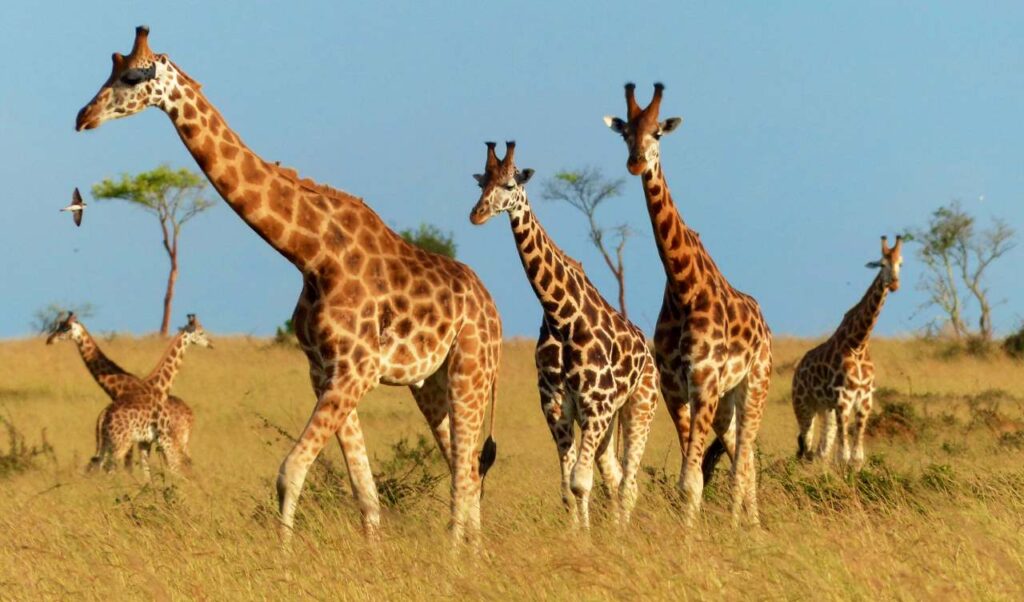This a true African wilderness of jaw dropping beauty with large concentrations of both predators and prey still enduring. Its huge skies, open savannahs, patches of forest and rolling hills have majesty. Altogether, it covers 1,978km of utter wilderness in the Western Rift Valley, and spans the equator line. Once here, brace yourself for 600 bird species and 95 mammal species. These range from elephants, lions, buffaloes, leopards, toppi, chimpanzees, Uganda kob, bushbuck, hippos, crocodiles…the list goes on.
This Big 5 Destination is set in a field of beautiful crater lakes, some of which are unanimously ranked among the 10 most crater beautiful worldwide (by Travel Advisories like CNN).
There isn’t much to expect along the highway that cuts through this gem–because it is too noisy for wildlife. In contrast, a visit to Kasenyi doesn’t disappoint. It is a open mating ground for both heavy browsers and small herbivores like toppi. This healthy concentration of prey attracts lots of lions, hyenas. If you particularly want to chance on leopards, a drive to the southern wing of the park will lead you a savannah with lots of fig trees. Upon their branches, leopards spend much of the day stalking prey. A drive along this area will further astonish you with sights of tree climbing lions. The search for them is an absolutely rewarding experience considering that there are plenty of other animals around including a lot of bushbucks.
In the interest of not interfering with the eco-system, the parks trails are made of smooth murrum, as opposed to tamack. None the less, they are easy to drive through as they are routinely well maintained.
Boat cruise at Kazinga Channel
Kazinga is a 32-kilometre long scenic river connecting two permanent freshwater lakes of Queen Elizabeth; Lake Edward and Lake Gorge. The parks different mammals come to this river at different times of the day to quench their thirst. This provides an incredible wildlife viewing opportunity which you can do from the comfort of a double decker boat. You will also watch hippos practically piled on top of each other in the shallows. Brace yourself for pictures of elephants and buffalo as they amble down to the shores of the calm water to cool off, while keeping a wary eye on the many crocs camouflaging in the green river.
During your return journey of this two hour-long cruise, you might spot a leopard lazing on a tree branch at the shoreline.
Chimp tracking in Kyambura Gorge
For the primate lovers, Kyambura Gorge provides an unmatched chimpanzee trekking experience. It is an underground forest where a community of 11 wild chimps swing from tree to tree with abandon. Compared to other chimp destinations like Budongo and Kibale, this easily accessible location is much more atmospheric. The resident chimp family here is, quite naturally, highly habituated to humans. This implies it’s quite usual to see alpha males wrestling down each other to impress the females. You can expect to see babies learning how to hunt for black and white monkeys, especially in the riverine forest patches.
Don’t forget to wear comfortable hiking boots when coming to Kyambura, the excursion ranges from 1-6 hours depending on the proximity of the particular part where the chimps are dwelling.
Birdwatching
Queen Elizabeth has 600 bird species of which 530 can be see anytime of the year, the others are migratory species which can best be seen from November to April. Notables include Shoebill, Heuglin’s gull, Rufous-bellied heron, Palm-nut vulture, Red-chested sunbird, Papyrus gonolek, Pink-backed pelican, Pel’s fishing-owl, Black-rumped buttonquail, Grey-winged robin-chat, Broad-billed roller, Great white pelican, Caspian plover, Great blue turaco, Collared pratincole, Crab-plover, Common sand martin, African skimmer, Spotted redshank, Yellow-throated cuckoo, Western banded snake eagle, Yellow-bellied wattle-eye, African hobby, White-backed night heron, White-winged tern, African finfoot and Ayres’s hawk eagle among others.
Best time to visit
Wildlife viewing and bird watching in this park is good year-round, but at its best from late May to September. During this time the rain is less and food is abundant.
Lake Mburo National Park
Lake Mburo National Park is a place you come to enjoy nature expecting to see some of the big 5 animals around every corner, particularly buffalos. It is not a zoo. Rather, it is nature in it’s purest form, somewhere in Western Uganda. The savannah park is small, compact and easy to travel around, and the number of animals are significant comparing to the small area of the park. No where else in Uganda do you get a big population of zebras as is Lake Mburo, over 8,000. Even more fascinating, it has almost all the animals in the antelope family, inclusive of toppi, klipspringer duiker, oribi and bohor reedbuck.
The best way to get an early feel for this park is to join the two-hour boat cruise up the freshwater lake after which it is named. It is made of 15 small freshwater lakes which are inter-linked by swamps with papyrus jungles.The whole journey, especially if you go at sunrise or sunset, is filled with massive sightings of watering buffalo, hippos, crocs and various antelope species.
Lots of trails here are extremely wild and barely travelled. This allows you meditate in peace without any interference.
If your priority is seeing lions and leopards, the game drives here can be a bit hit-and-miss, but you will seeing countless herds of buffaloes, toppi and giraffes.
Birdwatching
On of Lake Mburo’s strongest points is its possession of over 310 bird species inclusive of papyrus endemics such as papyrus gonolek and the blue-headed coucal. While it is so hard to come across birds at the northern limit of their range in other parks across Africa, at Mburo luck they in abundance. Examples include the black-collared barbet and southern ground hornbill.
Other notables include,Red-faced barbet, Shoebill, White-winged swamp warbler, Abyssinian ground hornbill, African finfoot, Bare-faced go-away bird, Greater painted-snipe, Brown-chested lapwing, Papyrus yellow warbler, Mosque swallow and Hairy-breasted barbet among others.
It can take some serious 4×4 driving to get to some parts of the park but is worth the mission. The better part of the story is that all cars in our fleet are customized for adventures off the beaten path.
A definite highlight of the area is a walking safari to the salt lick where you can see several mammals boosting the ion in their diet.
Best time to visit: All year round
Overview
This a true African wilderness of jaw dropping beauty with large concentrations of both predators and prey still enduring. Its huge skies, open savannahs, patches of forest and rolling hills have majesty. Altogether, it covers 1,978km of utter wilderness in the Western Rift Valley, and spans the equator line. Once here, brace yourself for 600 bird species and 95 mammal species. These range from elephants, lions, buffaloes, leopards, toppi, chimpanzees, Uganda kob, bushbuck, hippos, crocodiles…the list goes on.

